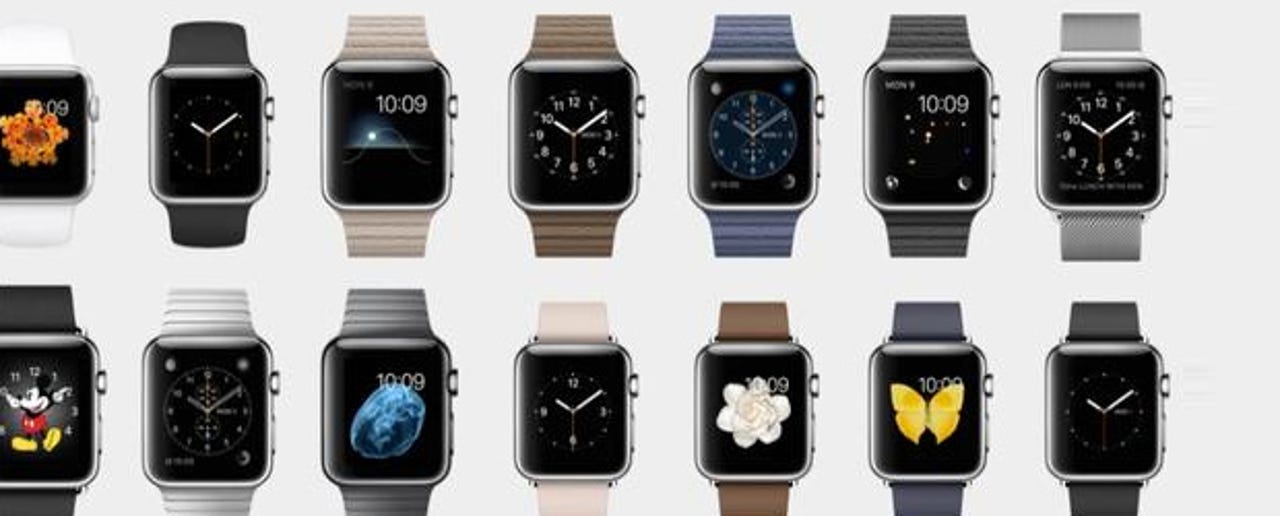Apple Watch: Now the hard work really begins


The first Apple Watch is only just arriving in stores - until recently you could go and look at it in the Apple Store but you couldn't actually buy one to take home - but there's already talk of the next version.
According to 9to5Mac, the next Apple Watch is in the works, with talk of adding a video camera and a wi-fi chip so that the watch can operate with less reliance on the paired iPhone. The company is also looking at offering new models using new materials and perhaps even a slight improvement to battery life. If the story is correct, then putting a camera on the watch is a brave move, considering the small scale of the Apple Watch (and its battery).
Some will, no doubt, throw up their hands in horror at the idea of a camera on a smartwatch. But then again, they probably said the same about cameras on smartphones. And about games, and colour screens, and browsers. But we take all of those for granted now as the smartphone has evolved.
Apple Watch
Battery life and Moore's Law permitting, the same will happen with the smartwatch. It makes sense to me that gradually many functions of the iPhone will move over to the Apple Watch (what this means for the iPhone, or indeed smartphones in general is a good question, although I don't think it's going to be answered for at least the next five years).
No doubt Apple will have already sketched out a roadmap for the next half a dozen versions of the Apple Watch to be released between now and the end of the decade, each one adding enough new functionality each time.
So with the next version of the Apple Watch on the (very, very distant) horizon already, the questions are: what will be enough to make someone upgrade? And what will be enough to convince late adopters to finally get onboard?
These are the next big challenges for the Apple Watch. Getting the Apple enthusiasts onboard first time around was easy - whether the second version can get owners of the original to upgrade is going to be a key factor in its success.
There was much talk about how watches - particularly high end ones - don't get replaced as quickly as smartphones or tablets, and that persuading owners to upgrade would be an uphill struggle. This will be one important indicator: will people upgrade?
I don't really think that's going to be an especially big issue with the Apple Watch, or smartwatches. Canny consumers are pretty used to trading in old smartphones for new and I can't see why they won't do the same with the Apple Watch, especially for additional features.
It might be more of an issue for those that have splashed out on the expensive Edition versions. If you've spend $10,000 to $17,000 on one of those, will you really be upgrading every year or so? Then again, if you've got that sort of money to spend on a first-generation product then splashing out again may not be the headache it would be for most.
And what about getting those late adopters on board? How will Apple convince those people who know better than to the buy the first version of any new technology that they must buy the second? Jason Hiner over at TechRepublic has some good ideas about what Apple has to do here. He says to make the device simpler, let the app ecosystem bloom, and broaden the appeal. All of this will help, as well as moving it beyond fitness and notifications.
Bear in mind that it was the emergence of the app ecosystem that really made the iPhone a success. I don't think that's going to be so much the case this time around, at least not on its own.
The success of smartwatches is by no means certain. I think it will be a hardware ecosystem that will be just as important with the Apple Watch as your connection to a world of digitally controlled environments (for your house, your car, your office, your favourite retailer). That will take another year of two to fully emerge, but when it does, the ability to use one device as a remote control in this way could be a big selling point, perhaps enough to win over some of those late adopters too.
Apple Watch and beyond: The strange history of smartwatches, in pictures
ZDNet's Monday Morning Opener is our opening salvo for the week in tech. As a global site, this editorial publishes on Monday at 8am AEST in Sydney, Australia, which is 6pm Eastern Time on Sunday in the US. It is written by a member of ZDNet's global editorial board, which is comprised of our lead editors across Asia, Australia, Europe, and the US.
Previously on Monday Morning Opener:
- Why Apple's quiet romance with the enterprise is on, but still needs work
- Enterprise startups: Is the fun about to end?
- Can Windows 10 save the PC?
- Three big questions the new Microsoft needs to answer
- Two types of fear, or how to win in the next stage of the cloud
- Apple Watch: When will it become a power tool for work?
- Can Samsung resharpen its edge against the competition?
- Microsoft and Apple are killing the password: Thumbs up to that